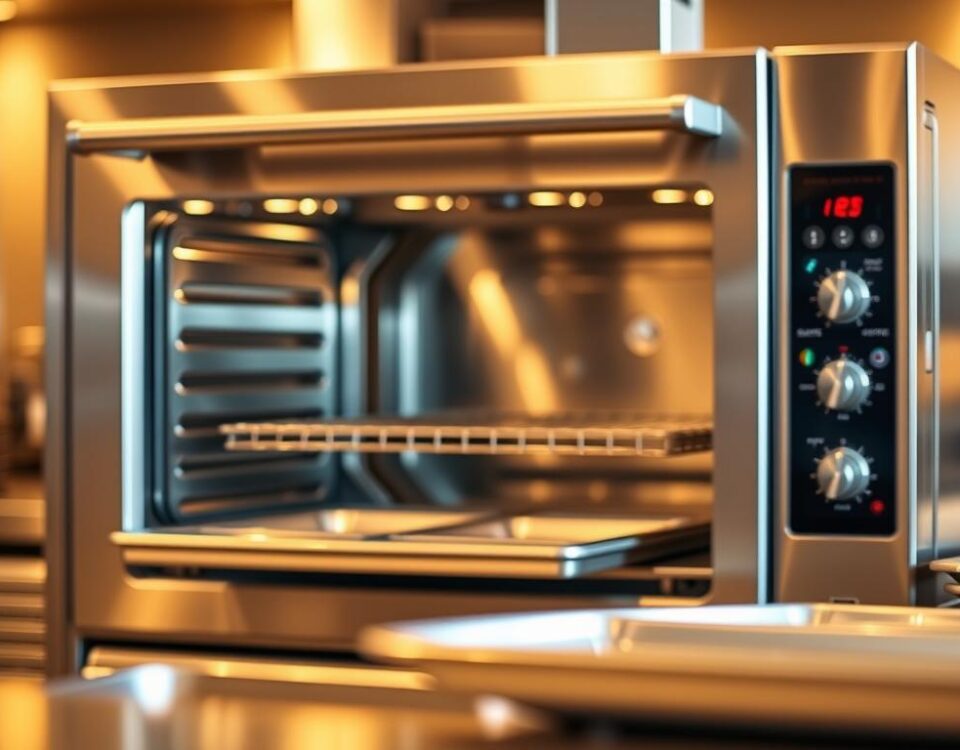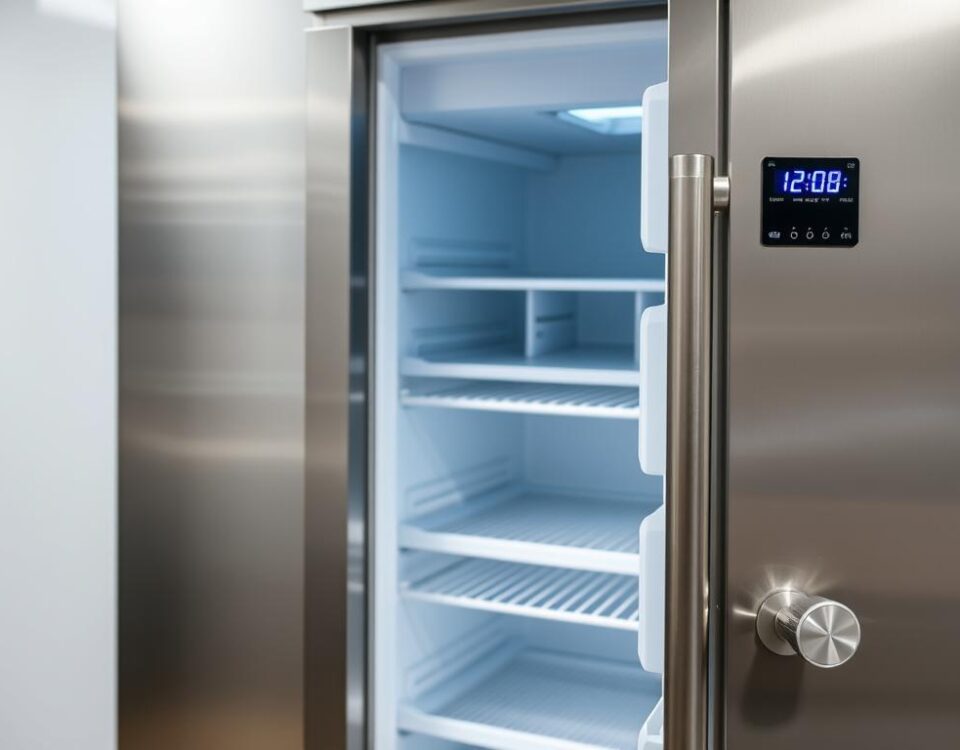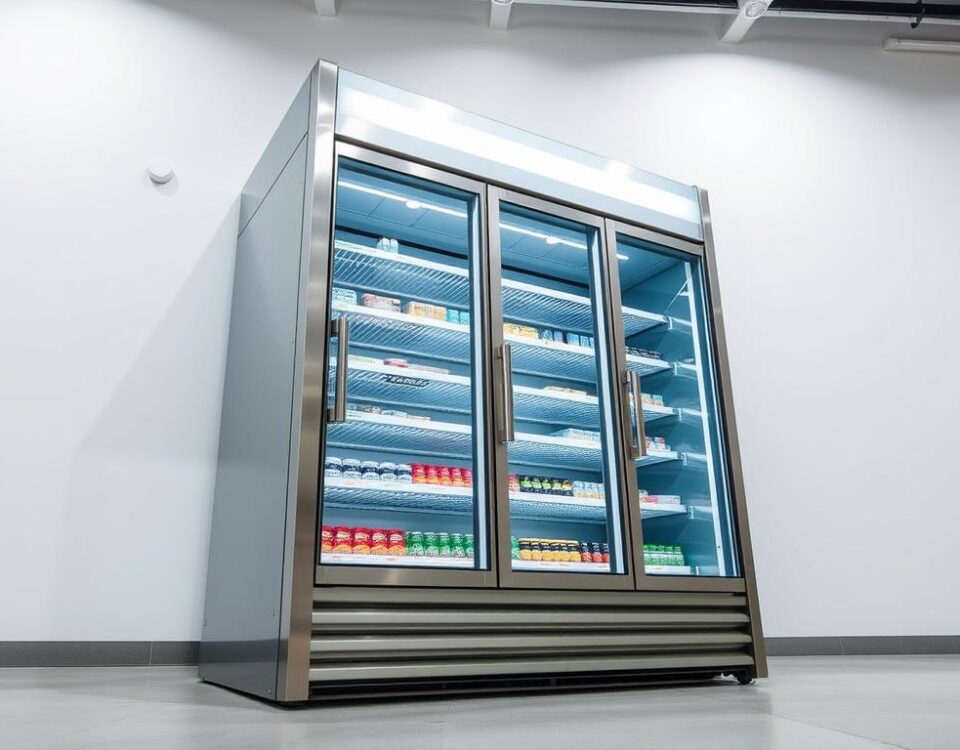
5 Common Food Photography Mistakes and How to Avoid Them
June 1, 2025
How McDonald’s and Burger King Changed the Way the World Eats
June 2, 2025Did you know 68% of grillers regret their first BBQ purchase because they prioritized convenience over flavor? I learned this the hard way when my gas grill left my brisket tasting like a campfire impersonator. The secret? Your fuel choice isn’t just about heat—it’s the soul of your food.
Growing up, I thought smoke was just a byproduct of grilling. Then I tried charcoal. The deep, earthy aroma that clung to my ribs transformed how I saw outdoor cooking. Suddenly, flavor wasn’t an accident—it was a craft shaped by fire type, airflow, and patience.
Gas grills offer speed, while charcoal delivers that iconic smokiness. Dual-fuel options? They’re the Swiss Army knives of backyard cooking. But here’s what matters most: your grill becomes an extension of your taste buds. The right choice elevates weeknight dinners into flavor adventures.
Key Takeaways
- Fuel type directly impacts taste, from subtle gas notes to bold charcoal smokiness
- Temperature control varies between grill types, affecting cooking precision
- Dual-fuel systems offer flexibility for different foods and occasions
- Smoke intensity can be customized through wood chips and airflow adjustments
- Proper grill selection reduces learning curves while maximizing flavor potential
In the next sections, I’ll break down how to match your cooking style with the perfect heat source. We’ll explore smoke management tricks and even DIY rub formulas that’ll make your neighbors peek over the fence.
Understanding the Basics of BBQ Styles
Great BBQ isn’t just about cooking meat—it’s a sensory journey that engages sight, smell, and taste. When I hosted my first backyard cookout, I realized success hinges on balancing technique with intuition. You need equal parts science and artistry to turn raw ingredients into smoky masterpieces.
What Defines a Great BBQ Experience
My mentor, a competition pitmaster, once told me: “The best meals happen when your tools become extensions of your hands.” This means understanding how heat sources interact with meat fibers and fat content. High-quality ingredients matter, but even premium cuts fall flat without proper temperature control.
I’ve found three non-negotiables for memorable results:
- Consistent heat distribution prevents dry spots
- Timely smoke infusion enhances natural meat flavors
- Resting periods let juices redistribute evenly
The Role of Flavor and Smoke in Your Grilling
Smoke acts like a seasoning rub for your meat’s interior. Different woods create unique profiles—hickory’s boldness complements pork, while fruitwoods add subtle sweetness to poultry. Through trial and error, I learned smoke density impacts taste more than cooking time.
Managing airflow became my secret weapon. Opening vents wide creates cleaner, hotter burns for lighter smoke. Closing them slightly produces thicker smoke that clings to meat surfaces. This simple adjustment lets me customize each cookout’s flavor intensity without changing ingredients.
Exploring Different BBQ Fuel Options
Three fuels, three personalities: your grill’s energy source shapes every bite. Through years of backyard experiments, I’ve discovered each option creates distinct textures and aromas. Let’s break down how wood, charcoal, and gas perform where it counts—your taste buds.
Heat Sources Decoded
Wood delivers unmatched depth, especially with hardwoods like oak or mesquite. I reserve it for special cuts needing 4+ hours of smoke. But it demands patience—preheating takes 25-35 minutes, and temperature swings require constant airflow tweaks.
Charcoal strikes a balance between tradition and convenience. Lump varieties burn hotter (500-700°F), while briquettes offer steadier heat. Just remember: ash buildup affects airflow. I clean my grates every 2-3 uses to maintain consistent results.
Gas grills win on weeknights. My propane model reaches 400°F in 10 minutes flat. While smoke flavor is milder, I add wood chips in a smoker box for subtle complexity. Perfect for quick cooks like burgers or veggies.
| Fuel Type | Preheat Time | Max Temp | Flavor Intensity |
|---|---|---|---|
| Wood | 25-35 mins | 600°F | Bold |
| Charcoal | 15-25 mins | 700°F | Rich |
| Gas | 5-10 mins | 500°F | Mild |
Pro tip: Match your fuel to cooking frequency. Charcoal enthusiasts don’t mind cleanup, while gas users prioritize speed. For true versatility? Combine a gas grill with a separate smoker—best of both worlds.
Choose your BBQ flavor: Tips for Selecting the Right Grill
Selecting equipment that aligns with your culinary goals requires understanding three core elements. Heat consistency, temperature range, and cooking duration form the trinity of great outdoor meals. My journey through burnt chicken and under-smoked brisket taught me this: your tools must complement both your schedule and flavor ambitions.
Mastering Thermal Dynamics
I evaluate grills like cast iron skillets—how well they hold and distribute energy matters most. Thick steel construction maintains steady temperatures during long cooks, while thinner metals fluctuate wildly. For briskets needing 12-hour sessions, I seek units with ±10°F stability.
Quick-cook proteins like shrimp demand different specs. Gas models excel here, reaching searing temps in minutes. But remember: high heat doesn’t equal control. My propane grill’s dual burners let me create zones—charred veggies on one side, gently cooked fish on the other.
| Grill Type | Preheat Time | Temp Control | Best For |
|---|---|---|---|
| Ceramic | 30 mins | Precise | Low & slow meats |
| Pellet | 15 mins | Automated | Versatile cooking |
| Gas | 8 mins | Instant adjust | Weeknight meals |
Syncing Equipment With Ingredients
Delicate salmon fillets taught me about indirect heat needs. Fatty cuts like pork shoulder thrive in smoky environments, while lean turkey breasts dry out without moisture boxes. Through trial and error, I developed this rule: match your meat’s fat content to your grill’s radiant heat output.
Flavor preferences also dictate choices. My cousin prefers subtle smoke notes—his hybrid grill uses gas with occasional wood chips. I crave boldness, so offset smokers dominate my patio. Neither approach is wrong, just deliciously different.
Gas Versus Charcoal BBQ: Making the Decision
Every backyard chef must decide: quick flames or smoky whispers? My neighbor’s weekly cookouts taught me this choice shapes more than meal prep—it defines your cooking rhythm. Let’s unpack what each option brings to the table.

Speed, Ease of Use, and Clean-Up Considerations
Gas models shine when time matters. My propane unit fires up in 8 minutes flat—perfect for post-work burgers. Ash trays stay empty, and a quick brush-down keeps grates clean. But charcoal demands patience. Lump varieties need 20+ minutes to reach ideal temps, followed by ash disposal that tests your dedication.
Here’s my efficiency breakdown:
| Factor | Gas | Charcoal |
|---|---|---|
| Preheat Time | 5-10 mins | 20-30 mins |
| Cleanup | Wipe surface | Ash removal |
| Temp Adjustment | Instant dials | Vent tweaking |
Flavor Implications: Quick Heat vs. Authentic Smoky Taste
Charcoal delivers that campfire magic gas can’t replicate. The difference? Combustion byproducts. Hardwood chunks create complex aromatic compounds that cling to meat. My trick: add cherry wood chips to briquettes for fruity undertones in ribs.
Gas offers subtlety. While convenient, I boost its flavor game with smoker boxes. Stainless steel pouches filled with hickory chips infuse chicken with whispers of smoke. Not the same depth as charcoal, but respectable for Tuesday tacos.
My verdict? Keep both. Weeknights belong to gas, while weekends savor charcoal’s ritual. This balance lets me host spontaneous dinners without sacrificing weekend brisket ambitions. Your turn—what’s your grilling personality?
Enhancing Flavor with Wood Chips and Smoked Elements
Smoke transforms good meat into legendary BBQ. My game-changing moment came when I swapped generic chunks for specialty wood chips—suddenly my pulled pork had depth that made guests ask for recipe cards. Let’s explore how these tiny flavor bombs work their magic.
Flavor Architects: Wood Varieties Explained
Not all smoke tastes the same. Through years of testing, I’ve found these winners:
- Hickory: Bacon-like intensity for pork ribs
- Apple: Subtle sweetness enhancing poultry
- Mesquite: Bold earthiness perfect for beef
- Cherry: Fruity notes balancing game meats
Oak became my go-to for long smokes—its steady burn complements brisket without overpowering. Pro tip: Mix pecan and maple chips for complex turkey profiles.
Mastering the Smoke Dance
Too much smoke creates bitter flavors. I start with ½ cup chips per hour of cooking, adjusting based on meat thickness. Soaking chunks extends smoke time, while dry chips ignite faster for quick bursts.
My smoker box hack? Layer chips with fresh herbs like rosemary. The oils create aromatic smoke that clings to salmon fillets. Remember—airflow is your dial. Open vents wider for lighter smoke, narrower for intense infusion.
Last summer’s experiment: Combining apple and hickory chips for pork shoulder. The result? Sweetness upfront with smoky undertones—a crowd favorite now requested at every gathering. Start small, track combinations, and let your taste buds guide upgrades.
Optimizing BBQ Performance with Key Features
Grill masters often overlook the power of accessories—until they’re stuck flipping burgers with oven mitts. My “aha” moment came when a $20 chimney starter shaved 15 minutes off my prep time. These unsung heroes transform chaotic cooking into streamlined sessions where flavor and efficiency coexist.
A heavy-duty lid became my secret weapon for temperature control. During a rainy cookout, I discovered it traps heat 40% better than open-air grilling. This simple upgrade lets me maintain steady temps for ribs while shielding coals from downpours. Just remember: ceramic lids retain heat longer than stainless steel.
Essential Accessories Like Lids, Racks, and Chimneys
Three tools revolutionized my setup:
- Chimney starters ignite coals evenly in 10 minutes—no lighter fluid aftertaste
- Adjustable racks create multi-level cooking zones for veggies and meats
- Built-in carts with locking wheels make repositioning effortless during windy days
My Weber chimney pays for itself in convenience. No more guessing games with match-light briquettes. The table below shows how accessories impact cooking efficiency:
| Accessory | Time Saved | Flavor Benefit |
|---|---|---|
| Smoker Box | 20 mins | Consistent smoke infusion |
| Grill Basket | 15 mins | Even charring |
| Thermometer | 30 mins | Precision doneness |
Last summer’s discovery? A top-mounted warming rack keeps buns toasty without hogging grill space. Pair it with a lid, and you’ve got a mobile oven for melting cheese or roasting garlic. These additions don’t just upgrade equipment—they expand what’s possible in backyard cuisine.
Integrating Dual Fuel and Specialized BBQ Equipment
Modern grilling isn’t about picking sides—it’s about having options when inspiration strikes. My backyard transformation began when I added a dual-fuel system that merges pellet convenience with gas responsiveness. This hybrid approach lets me sear steaks on high heat while smoking ribs low-and-slow, all during the same cookout.
When One Fuel Isn’t Enough
Dual-fuel grills solve the “weeknight vs weekend” dilemma. I fire up the gas side for quick chicken dinners, then switch to pellet mode for Saturday brisket marathons. Brands like Kamado Joe take it further—their ceramic cookers retain heat like champions while handling direct and indirect methods simultaneously.
Three game-changers I’ve tested:
- Pellet/gas combos offering 150-700°F range
- Smoker attachments injecting authentic wood flavors
- Modular designs allowing grill expansions
| Grill Category | Fuel Options | Best For | Flavor Intensity |
|---|---|---|---|
| Dual Fuel | Gas + Pellet | Versatile meals | Adjustable |
| Ceramic | Charcoal/Wood | Slow smoking | Bold |
| Hybrid Smoker | Gas + Wood Chips | Weeknight smoke | Medium |
My Kamado Joe’s secret weapon? Its airlift hinge makes checking meats effortless. Combined with a smokebox attachment, it delivers restaurant-quality bark on pork shoulders. While pricier than basic gas grills, these specialized units pay off in flavor diversity.
Last Fourth of July proved hybrid systems’ worth. I grilled burgers on gas burners while smoking beans in the pellet chamber—all without juggling multiple devices. For cooks craving flexibility without compromise, this category reshapes what’s possible in backyard barbecue.
The Art of Crafting Homemade BBQ Rubs and Seasonings
The difference between good and great barbecue often hides in your spice cabinet. My breakthrough came when I replaced store-bought mixes with custom blends—suddenly, my smoked creations developed personality. A well-balanced rub acts like a flavor fingerprint, turning standard cuts into conversation starters.

Finding the Balance of Sweet, Salty, Smoky, and Spicy
I start every blend with a 2:1:1 ratio—two parts sweet to one part savory and one part heat. Brown sugar forms my base, while smoked paprika adds depth without overwhelming. For heat lovers, chipotle powder delivers smokiness alongside kick.
Three rules guide my mixing:
- Use coarse salt to prevent over-salting
- Layer spices by grind size (fine powders first)
- Toast whole seeds before grinding for intensity
Applying Your Rub to Different Meats for Maximum Flavor
Texture matters more than you’d think. Chicken breasts need finer granules to stick properly, while pork shoulders handle chunkier mixes. My table below shows ideal pairings:
| Meat | Base Spice | Secret Weapon |
|---|---|---|
| Chicken | Garlic powder | Lemon zest |
| Pork | Cumin | Instant coffee |
| Steak | Black pepper | Cocoa powder |
Last summer’s experiment proved rubs transform results. A coffee-chili blend on pork ribs created a bark that crackled with every bite. For chicken, I learned patting skin dry first helps spices cling better during high-heat searing.
Great seasoning starts with quality ingredients but thrives on bold experimentation. Keep notes, taste as you mix, and let different meats guide your creative process. Your perfect blend awaits—one shaker jar at a time.
Maximizing Taste with BBQ Techniques and Temperature Control
The sizzle of meat hitting a cold grill still haunts my early BBQ attempts. Preheating isn’t just a suggestion—it’s the foundation of caramelized crusts and tender interiors. I learned this after serving rubbery pork chops that even my dog side-eyed.
Here’s why thermal prep matters: grills need 15-20 minutes to create even heat zones. My infrared thermometer revealed cold spots vanish at 450°F, ensuring consistent searing. For charcoal, ash should turn white before cooking. Gas users? Wait until the hood thermometer stabilizes.
How Preheating and Resting Meat Impacts Flavor
Resting transformed my results more than any rub. Slicing steak immediately after cooking? That’s juice suicide. Letting it sit 5-8 minutes allows fibers to relax, trapping moisture inside. I test readiness by touch—springy surfaces signal properly redistributed juices.
Three rules I follow religiously:
- Preheat to 50°F hotter than target cooking temperature
- Rest meat 1 minute per 100g weight
- Track internal temps with a probe thermometer
| Meat Type | Ideal Grill Temp | Rest Time |
|---|---|---|
| Chicken Breast | 375°F | 5 mins |
| Pork Ribs | 225°F | 10 mins |
| Brisket | 250°F | 30 mins |
Small tweaks create big differences. Lowering heat 25°F extends cooking time but prevents burnt edges. Adding 2 minutes to burger flips melts cheese perfectly without overcooking. My notebook system—recording temps and times—turned guesswork into repeatable success.
Conclusion
The journey to exceptional barbecue begins and ends with understanding your tools. Through years of trial and error, I’ve learned that results hinge on three pillars: fuel personality, smoke mastery, and equipment harmony. Whether chasing charcoal’s rustic charm or gas’s weekday convenience, your choice becomes the foundation for every sizzle and sear.
Every backyard chef’s path differs. Some prioritize speed, others crave smoky depth. My advice? Treat options as opportunities. Blend wood chips with charcoal for layered flavors, or pair gas grills with smoker boxes for quick complexity. There’s no universal “best” setup—only what makes your taste buds dance.
Remember: great barbecue isn’t about perfection. It’s about the joy of heat meeting meat, smoke weaving stories, and shared meals under open skies. Your grill becomes a flavor laboratory where mistakes often lead to breakthroughs. Trust the process, experiment boldly, and let personal preference guide upgrades.
Ready to elevate your game? Fire up those coals, adjust those vents, and share your triumphs. The right choice turns routine dinners into smoky symphonies—one delicious bite at a time.
FAQ
What’s the biggest difference between gas and charcoal grills?
Gas grills offer quick heat and easy temperature control, while charcoal delivers that classic smoky flavor. I prefer charcoal when I want depth in meats like brisket, but gas wins for weeknight burgers.
How do wood chips enhance my BBQ’s taste?
Wood chips add unique aromas—hickory gives pork a bold kick, while applewood subtly sweetens chicken. I soak them first for slower smoke release, ensuring my ribs get that perfect kiss of flavor without bitterness.
Can I use a Kamado Joe grill for both smoking and grilling?
Absolutely! Kamado Joe’s ceramic design retains heat like a champ. I’ve smoked pork shoulder at 225°F for hours, then cranked it up to sear steaks. It’s versatile, though mastering airflow takes practice.
Why does preheating matter so much?
Preheating ensures even cooking and better sear marks. My Weber Genesis reaches 500°F in 10 minutes, creating a crisp crust on steaks. Skipping this step leads to uneven doneness—trust me, I’ve learned the hard way.
Are pellet grills worth the investment?
If you love smoky flavors but want set-and-forget convenience, yes. My Traeger pellet grill maintains steady temps for hours, ideal for pulled pork. Just know pellets burn faster in cold weather—keep extras handy.
How do I balance sweet and spicy in homemade rubs?
Start with a 2:1 ratio of brown sugar to chili powder. For ribs, I add smoked paprika and cayenne. Taste as you mix—adjusting heat with black pepper or sweetness with honey granules until it sings.
What’s the best way to clean a charcoal grill’s ash?
Wait until coals fully cool, then sweep ashes into a metal bin. I use a GrillArt ash tool to scrape the bowl. Never dump hot ash—it’s a fire risk and can damage your patio.
Do I need a lid for every grilling session?
Lids trap heat and smoke, crucial for slow-cooking meats like whole chicken. But when searing scallops on my Napoleon gas grill, I leave it open for direct, high-heat crisping. Match the tool to the task.
Can I mix wood types for complex flavors?
Yes! Cherry and pecan wood pair beautifully with beef. I’ll often layer mesquite for boldness and oak for stability. Experiment—but start with small batches to avoid overpowering your main ingredient.
How long should I rest meat after grilling?
For thick cuts like ribeye, 5–10 minutes lets juices redistribute. Whole smoked turkey? Give it 20–30 minutes tented in foil. Rushing this step means drier results—patience is a pitmaster’s secret weapon.



